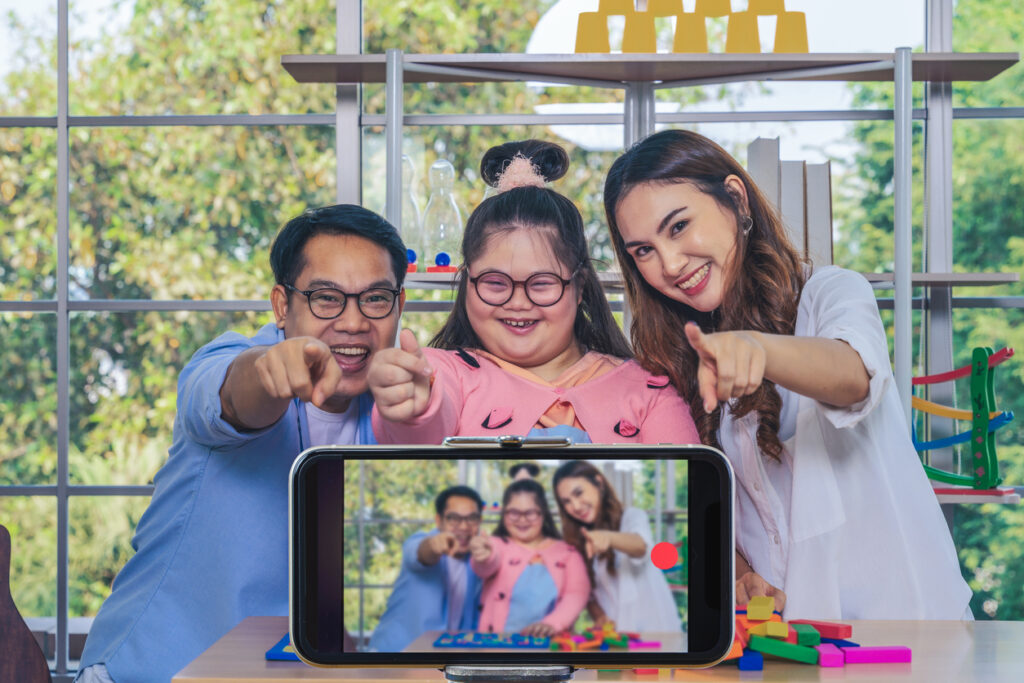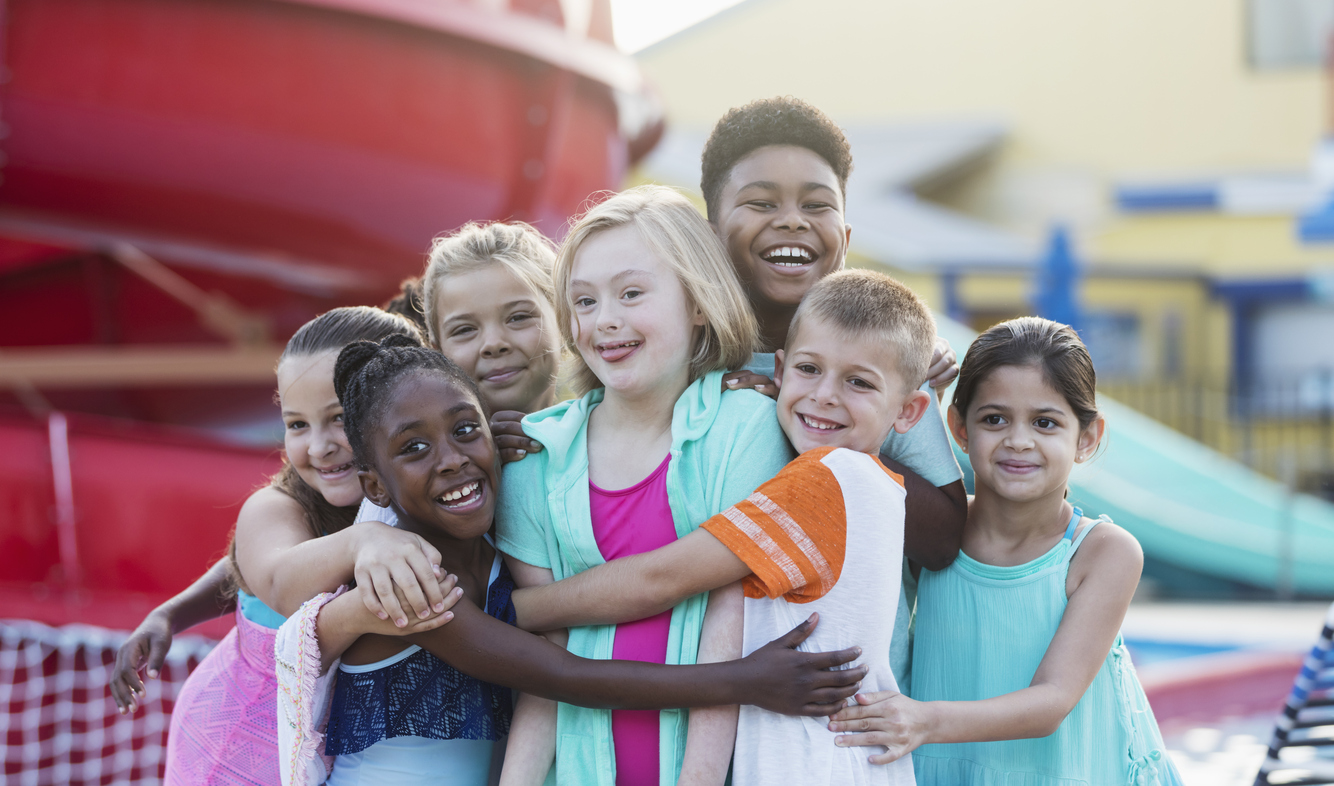Until I met my friend Paul in 2013, I had never interacted with anyone with an intellectual or developmental disability (IDD). However, as we became closer, I saw and understood my friend’s daily challenges. Also, the sheer force of life drives him to live a full life despite challenges.
Paul has epilepsy and is mentally handicapped. However, his immense joy, kindness, and love capacity strike everyone interacting with him. Paul loves everybody, talks to everybody, helps everybody and is always laughing. He tells the most amazing stories, is a joy to be around, and does the most incredible things with his hands.
But people like Paul rarely find a place in mainstream media. 7.39 million people are living with an IDD in the US. These are just a tiny part of the 15% of the global population with disabilities. Despite that, reports show that only 3.1% of characters in broadcast programming have actual disabilities, and that number is less than 1% in kid’s shows.
Of these media portrayals, even fewer are positive or authentic. Most are played by non-disabled actors, such as in the 2016 action/thriller movie The Accountant, where Ben Affleck plays an accountant with autism. Another one is Jim Parson’s supposedly autistic character, Dr. Sheldon Cooper, in The Big Bang Theory.
Many other shows like these perpetuate inaccurate, sometimes offensive, ableist stereotypes of characters with disabilities. I’ve always been troubled by how people living with autism, Aspergers, severe OCD, epilepsy, Down syndrome, or other conditions that cause IDD are portrayed in mainstream media.
It’s Time to Eradicate Stereotypes and Change Societal Norms
The fact that there’s so little disability representation in mainstream media is spurring positive change. So Nielsen will start tracking media representation of people with disabilities in its popular rating system, particularly in movies and TV shows. The decisive move could stimulate more and better disability representation in TV and film.
That being said, what little media “representation” is often misguided. Despite the good intentions behind it, a lot of film directing and casting that covers themes of disability can do more harm than good. What message does it send when non-disabled actors and actresses play disabled characters?
A lot of mainstream media is indeed entertainment. But media also carries much power to shape societal perceptions, ideas, and realities. For example, Paul loves watching reality TV shows and drama movies, but he’s never seen one that reflects his life experience. As a result, he can’t identify with a single character who thinks like him or sees the world as he does.
Media and television are central to shaping identities, communities, and worldviews. When we can’t find people and experiences around us that reinforce our identity and understanding of the world, we look to the media.
What’s the Problem?
The media often portrays an idealized world where people with Asperger’s are unrealistically gifted, kids with autism can hardly function, and those with Down syndrome as helpless dependents. Many characters are simply props in the story, and certain groups are entirely omitted from mainstream media.
This kind of misguided representation must come to an end. The right type of representation for people suffering from intellectual or developmental disabilities can do a lot to create an environment where people like my friend Paul feel accepted, understood, appreciated, and recognized.
It’s time that TV, film, music, and other popular media work intentionally toward a more inclusive and authentic representation of individuals with disabilities, particularly those with IDD. Like Walter White’s character in Breaking Bad, who suffers from autism on screen and in real life, realistic depictions of life for a person with IDD can help kill cliché tropes and ideas.
Disabled people aren’t just props; they’re not burdens or victims. They don’t need “heroes” to swoop down and save them. Instead, we must use media to celebrate these incredible friends, siblings, sons, and daughters for their unique, rich, and complex identities.
Shape Identities, Especially for Kids
I remember how I loved Chronicles of Narnia when it came out. I was still young then, and it was fascinating to see friends exploring a fairytale world, righting wrongs, and displaying a strong sense of responsibility for the world around them. Things clicked inside me because I could identify with similar experiences in my life.
In his childhood years, Paul had no such luxury. He couldn’t read, and the shows he loved didn’t supply the positive reinforcement he needed to feel the same connection and emotional satisfaction I did. The ones he did see were likely harmful, telling him that he would always be dependent on his parents or that he couldn’t enjoy a “normal” life.
Many TV shows and films show kids with autism as bullied nerds for their condition. As a result, they have few friends and can barely dream of being popular high achievers in school. I can only imagine how depictions like this would stunt a kid’s ambition and imagination. So, from an early age, they resign to a poor life with few aspirations.
It’s essential to have positive representation in the media that encourages those with IDD to accept themselves and dream big. They need to see what people with intellectual or developmental disabilities can achieve.
Some toy companies have been getting ahead of this. New additions like Para-Skiing Barbie and Aaron “Wheelz” Fotheringham by Hot Wheels are shaping the dreams of kids with disabilities worldwide.

Authentic Exposure Creates Familiarity
More importantly, media representation shapes how the rest of the world views and interacts with people living with IDD. The negative stereotypes and biases we see daily are reinforced each time we see a wrong portrayal of a disabled character.
Even the way media reports real-life events and stories is often biased. People with disabilities overcome the odds to achieve great things. Yet, Stephen Hawking and Walt Disney (who had ADHD and Dyslexia) are portrayed as the exception rather than the norm. These subtle biases propagate unintentionally wrong ideas towards individuals living with disabilities.
My interaction with Paul quickly dissolved the idea that I had to “save” him. He didn’t need my help to be happy, firm, or active. He didn’t need me to dumb down the world for him or protect him from it. Yet those were my first instinctive reactions, born from a culture that looks down on people with IDD by default.
Media representation has the power to change these cultural norms for the better. Shows like Glee help break stereotypes and encourage societal acceptance, for instance.
We can all tap into this same power to shape the world around us. We can change how people think and respond to people living with IDD through widespread media, including TV, social media, and films. This must happen immediately because these people need to feel accepted and loved within society. They need equal consideration for jobs, positions of leadership, and talent development opportunities.
A 2020 survey showed that nearly two-thirds of people with disabilities in the US are unemployed. Another one in 2021 revealed that only 9.2% of companies surveyed employed more than 7% of people living with a disability.
Statistics like these show that societal stereotypes have far-reaching consequences, and they need immediate change.
Creating an Inclusive World: What to Do?
In addition to working towards more representation in the media, the more significant need is to include people with IDDs and other disabilities in the media and TV industry. For example, we need people living with IDDs directing or consulting on shows and acting in leading roles.
Able-bodied people play more than 80% of characters with a disability on screen, and it needs to change. But, first, it’s essential to have people with first-hand experience with IDDs. These include caregivers playing these characters because they can do so more accurately. This alone will go a long way toward dismissing tropes and biases against people with intellectual or developmental disabilities.
It’s also time that we recognize talent in the industry. There are many disabled people with the skill and ability to excel in mainstream media. However, they need more opportunities to develop and grow in these roles.
It’s encouraging to note that this is already happening. The percentage of disabled characters portrayed authentically has been rising. It was 5% in 2016, 12% in 2018, and 22% in 2020, according to studies by the Ruderman Foundation.
Recently, films like Give Me Liberty and Peanut Butter Falcon have been critically acclaimed for accurately depicting characters with Down syndrome and Amyotrophic Lateral Sclerosis (ALS).
Better Representation Is a Win-Win
For Hollywood and organizations in the media industry, IDD representation is far from an act of charity. The Ruderman Foundation found that Hollywood misses over $125 billion annually by not having adequate and authentic disability representation. This is money lost through forgotten subscriptions and a reduced viewing base.
Research has also shown that better representation and inclusivity can significantly increase productivity, revenue, and profit margins.
Creating a More Inclusive World for People Living With IDD
Venture Foundation creates public awareness and a financial safety net for individuals with developmental disabilities Venture Foundation’s care. If you would like to support our efforts to better the lives of those in the Intellectual and Developmental Disability Community, especially those receiving service care from Venture Together, find out how you can help.






